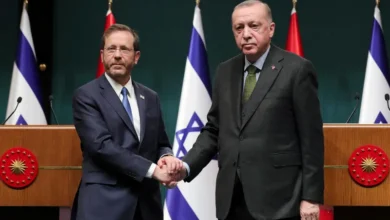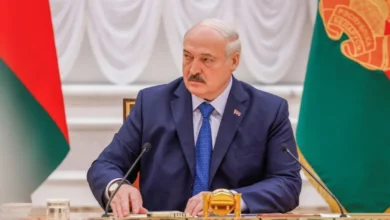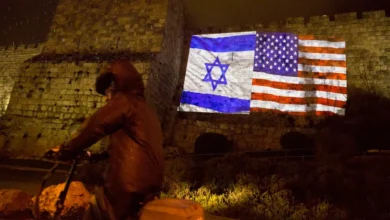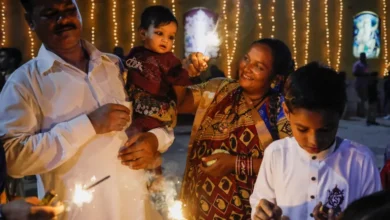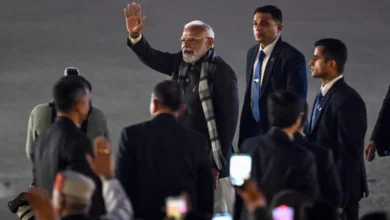‘Want to die with my family’: Gaza workers, patients stuck in West Bank
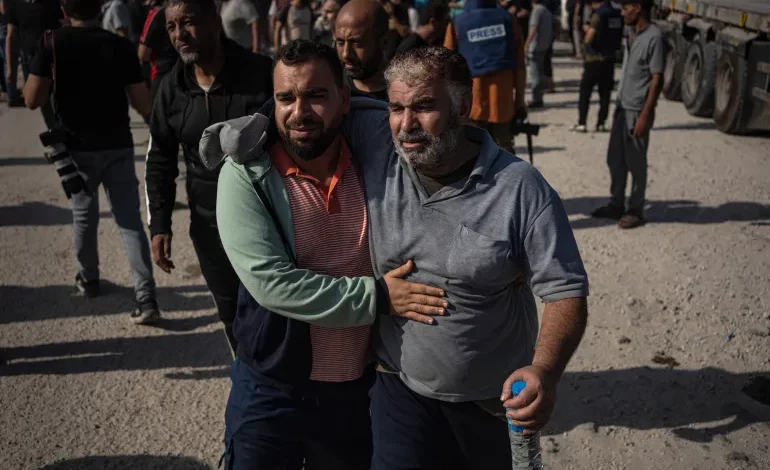
“I want the war to end and to go back to Gaza,” said Mohammed Abu Seef, a wide-eyed, 11-year-old boy, holding back his tears.
“Please stop this. We are
Mohammed has spent his whole life in the besieged Gaza Strip, barring a trip to the Israeli city of Herzliya to receive medical treatment that has since morphed into a nightmare.
On October 7, an unprecedented attack by Hamas launched on Israeli army outposts and surrounding villages in southern Israel resulted in the deaths of more than 1,400 people. More than 200 Israelis — including dual nationals — were taken captive and brought to Gaza. Hamas said its actions were in response to what it described as decades of atrocities committed against Palestinians and their holy sites.
Since then, more than 9,200 people in Gaza, including at least 3,800 children, have been killed by Israeli air strikes and, now, a ground invasion.
But the war has also separated thousands of Palestinian family members from each other, including children like Mohammed, who was forced by Israeli soldiers to cross into the occupied West Bank from Israel, while his family is in Gaza.
The United Nations has estimated that more than 45 percent of homes and a significant proportion of civilian infrastructure in Gaza have been flattened by Israel’s indiscriminate bombing.
Two hours after Al Jazeera spoke with him at a temporary camp in the northern West Bank city of Nablus, we were informed that Mohammed’s younger brother and sister had been killed in an Israeli air strike on his home in the Jabalia refugee camp in northern Gaza.
So far, volunteers running the site housing stranded workers from Gaza have been unable to summon the courage to break the news to him.
Uncertain future
Mohammed remains at the temporary encampment at the Nablus Municipal Stadium along with more than 200 other displaced people from Gaza.
But the future of the site – like many in the occupied West Bank – is uncertain. So, too, is the fate of its occupants.
Before October 7, an estimated 18,500 people from Gaza had permits that allowed them to work in Israel. Since then, thousands of them have been arrested, and others have gone missing — human rights groups and labour unions have warned that large numbers of workers may have been taken into Israeli detention camps.
In addition, by October 12, Israel had expelled at least 600 of the workers from Gaza into the West Bank. Now, regional sources say, more than 5,500 Gaza residents are estimated to have been trapped in the West Bank since October 7
On Friday, Israel began sending workers from Gaza who were in Israel back to the coastal enclave, and to a possible death sentence. The exact number of workers still present in Israel remains unknown.
But volunteers at the Nablus Municipal Stadium confirmed on Friday that none of the people from Gaza sheltering there had been sent back yet.
‘I don’t think about growing up’
It isn’t just workers from Gaza who are stranded in the West Bank, though.
For the past three months, Mohammed has been separated from his family. Initially, he received treatment for a serious arm fracture at a hospital in Herzliya.
But when the war broke out on October 7, soldiers removed him from the hospital and forced him over a dangerous crossing on foot through military checkpoints to the West Bank.
“I was at the hospital, but they kicked me out,” Mohammed told us. “I went to Nazareth until things cooled down so I could go back to the hospital for treatment, but they followed us there and kicked us out as well.
“We started running because if they caught us, they would have kept us as hostages. Thank God I had my cousins with me. But I haven’t seen my family for the past three months.
“I miss them so much and I talk with them every day.”
When asked about his hopes for the future, Mohammed said: “I don’t think about growing up to be anything.
“I am just thinking about building a new home for my family. I don’t want my mother to be forced to move from one house to another any longer.”
Mohammed’s home and entire neighbourhood at the Jabalia refugee camp, the largest of eight in Gaza, have been decimated during Israel’s bombardment of the Hamas-controlled enclave.
His family, he said, is currently staying with an uncle. “But my other uncles went back to God.
“One of my uncles built the building where [the other side of] my family was hiding, but the Israelis bombed it without warning and killed my two uncles and their whole family.”
He played a video of his cousin crying beside the lifeless body of his father, Mohammed’s uncle – leaving him the only surviving member of his immediate family.
“I wish he died. I wish he went with his family,” Mohammed said.
A campaign of detentions
After Israeli military raids and scores of arrests at refuge sites in the nearby cities of Hebron and Bethlehem, those sheltering in Nablus are terrified that they, too, could be detained by Israeli forces.
The raids in the West Bank are part of a wider campaign of detentions that has so far seen at least 1,900 Palestinians arrested since the outbreak of the war.
Most of the 425 people sheltering in various sites in Nablus are displaced men who held permits to work outside of Gaza.
Those displaced in Nablus are gripped with fear about the fate of their family members who remain in Gaza.
“My wife is calling me, asking when she and my son are going to die,” said a man who had been working in Israel as a nurse on October 7.
His wife and their young child had been staying with family in Shujaiya, Gaza, before the war broke out. He asked to remain anonymous to prevent reprisals.
“She tells me that if we see each other again, it’s a blessing, and if not, that’s what God wishes,” he added.
“Nothing breaks your heart more than hearing your wife cry and saying that she’s waiting for her death.
“Her mental health is deteriorating. Every time I call her on the phone, she’s crying to me and asking what is happening to her.”
‘They are all waiting to die’
The volunteers running the the camp in Nablus have told him and other people there that their resources are running out and the camp may not be able to stay open much longer.
“Any second now they [Israeli forces] could detain me,” the man told us. He hadn’t committed any crime, he said, but they could still “detain me, torture me or do anything to me”.
“For all us workers here in Nablus, we’re basically just bodies without souls,” he added. “Everybody’s just worried about their family, and we are very anxious and stressed.
Back in Shujaiya in Gaza, his family is now living in a house that is sheltering more than 50 people, he said.
“They are all waiting to die.”
He said his father was initially “adamant” that he and his family would “die in their own home” after Israeli warnings that bombs were incoming.
But after persuasion by friends and family members, he finally accepted the family would need to move to the house they are now in – just a few hours before their own neighbourhood was flattened.
